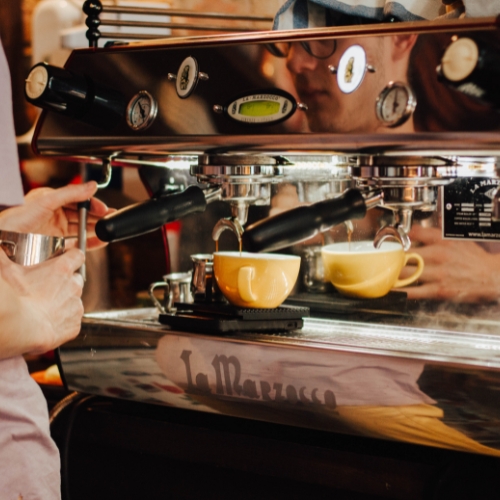

In the realm of coffee aficionados and baristas, the espresso machine stands as a marvel of engineering, capable of producing rich, flavorful shots of espresso with precision and consistency. Behind its sleek exterior lie several essential spare parts, each playing a crucial role in the complex process of brewing espresso. Exploring essential spare parts and their functions allows us to understand what each component contributes to the art of espresso-making.
1. Boiler: The Heart of Heat
At the core of every espresso machine is the boiler. This component heats water to the optimal temperature for brewing espresso, typically between 195°F to 205°F (90°C to 96°C). Boilers can be single or dual, depending on the machine’s design. Single boiler systems heat water for both brewing and steaming, while dual boiler systems have separate boilers for each function, allowing simultaneous brewing and steaming without temperature fluctuation.
2. Portafilter: Gateway to Flavor
The portafilter is where the magic happens. This handle-like device holds finely ground coffee and attaches to the machine’s group head. It’s essential for even distribution of water through the coffee grounds, ensuring proper extraction and flavor development. Portafilters come in various sizes to accommodate single, double, or triple shots of espresso, and they are often made of stainless steel or brass for durability and heat retention.
3. Group Head: Precision in Extraction
Connected to the portafilter, the group head is where hot water is forced through the coffee grounds under pressure to extract espresso. It’s a critical component that must maintain consistent temperature and pressure to achieve optimal extraction. Group heads can be saturated, where water is constantly in contact with the boiler, or semi-saturated, using a heat exchanger or thermosyphon system for temperature stability.
4. Pump: Pressure for Perfection
The pump is responsible for creating the necessary pressure to extract espresso. It draws water from the boiler and forces it through the coffee grounds in the portafilter at around 9 bars of pressure (equivalent to 130 psi). This pressure is crucial for extracting flavors and oils from the coffee grounds efficiently, resulting in a rich, aromatic espresso with a creamy crema.
5. Steam Wand: Crafting Milk Perfection
For milk-based beverages like lattes and cappuccinos, the steam wand is indispensable. Connected to the boiler, it heats and froths milk using steam generated at high pressure. Baristas use the steam wand to create microfoam for velvety textures or to steam milk to various temperatures, enhancing the versatility of the espresso machine beyond just brewing espresso.
6. Solenoid Valve: Post-Brewing Efficiency
After brewing, the solenoid valve plays a crucial role in releasing excess pressure and water from the group head. This process prevents dripping and helps maintain cleanliness by allowing for easy removal of the coffee puck from the portafilter. It’s a small but essential component in ensuring a smooth workflow and consistent performance of the espresso machine.
7. Pressure Gauge: Monitoring Performance
The pressure gauge provides real-time feedback on the pressure inside the boiler or during extraction. It allows baristas to monitor and adjust parameters to achieve the desired brewing pressure for different coffee blends and preferences. Pressure gauges come in various types, including brew pressure gauges for extraction and steam pressure gauges for steaming milk.
8. Heating Element: Powering the Process
In electric espresso machines, the heating element (often a heating coil) converts electrical energy into heat, raising the temperature of the water in the boiler to brewing or steaming temperatures. It’s a fundamental component that ensures consistent performance and allows for quick recovery times between shots.
9. Safety Valve: Protecting the System
To prevent overpressure situations that could damage the machine or pose safety risks, espresso machines are equipped with safety valves. These valves release excess pressure from the boiler to maintain safe operating conditions, providing peace of mind to users and ensuring the longevity of the machine.
In conclusion, exploring essential spare parts and their functions reveals the espresso machine as a marvel of precision engineering, blending artistry with science to deliver the perfect shot of espresso. Each component, from the boiler and portafilter to the pump and steam wand, plays a crucial role in ensuring consistent flavor, aroma, and texture in every cup. By understanding these parts, baristas and coffee enthusiasts can not only appreciate the craftsmanship behind espresso-making but also optimize their brewing techniques and maintain their machines for years of exceptional coffee experiences.